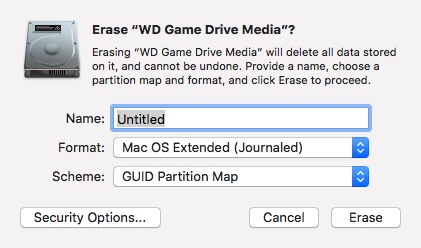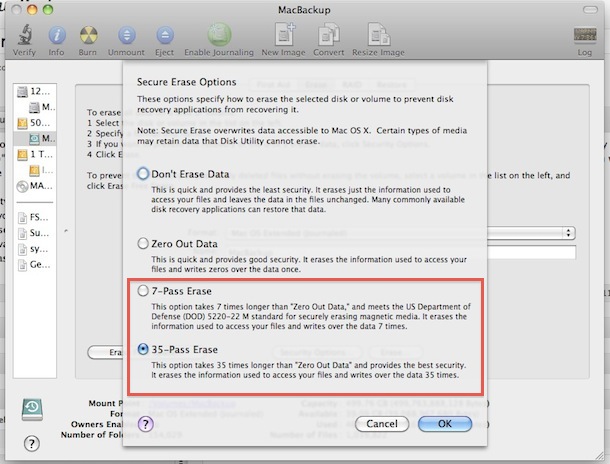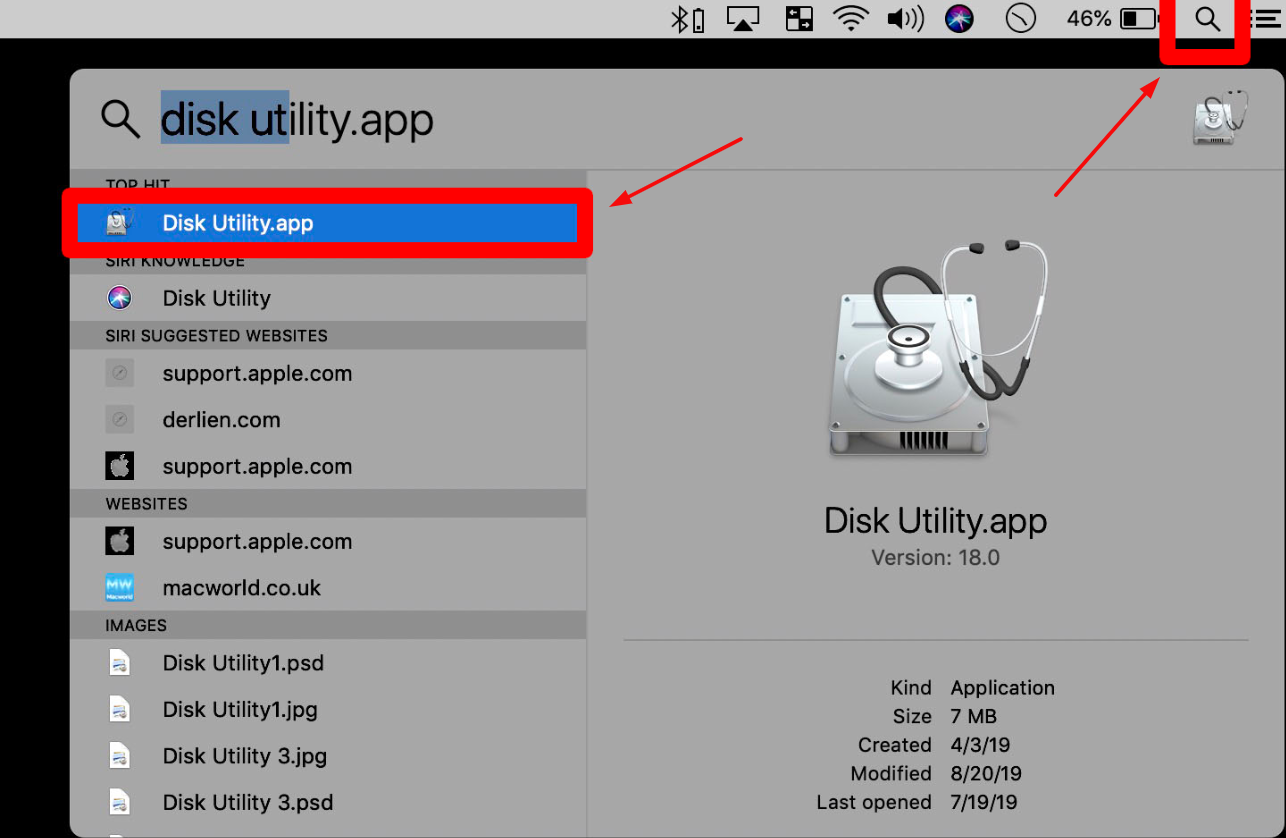

- #HOW TO FORMAT MAC HD DISK OUTSIDE COMPUTER HOW TO#
- #HOW TO FORMAT MAC HD DISK OUTSIDE COMPUTER MAC OS#
Or can be specified as %noformat% to skip initialization (newfs).Įxample: diskutil eraseDisk JHFS+ UntitledUFS disk3įinally, it’s worth mentioning that if you want to erase the currently booted disk from the command line from this method, you’d want to do so from a boot disk or from recovery mode. Name is the (new) volume name (subject to file system naming restrictions), Ownership of the affected disk is required.įormat is the specific file system name you want to erase it as (HFS+, etc.). All volumes on this disk will beĭestroyed. Usage: diskutil eraseDisk format name |MBR|GPT]Ĭompletely erase an existing whole disk. Users who would like additional details or information about the other options available including MBR and GPT settings can query the man page with “man diskutil” and searching for “eraseDisk”, or execute the command with no specifics like so:
#HOW TO FORMAT MAC HD DISK OUTSIDE COMPUTER MAC OS#
Formatting a Disk to Mac OS Extended Journaled (JHFS+) from Terminal in Mac OS Xĭiskutil eraseDisk JHFS+ DiskName /dev/DiskNodeID Formatting a Disk to Mac OS Extended (HFS+) from Terminal in Mac OS Xĭiskutil eraseDisk HFS+ DiskName /dev/DiskNodeID Formatting a Disk to MS-DOS fat32 from the Command Line in Mac OS Xĭiskutil eraseDisk FAT32 DiskNameGoesHere /dev/DiskNodeIDHere Formatting a Disk to ExFAT from the Command Line in Mac OS Xĭiskutil eraseDisk ExFAT DiskName /dev/DiskNodeIDĪgain, any of these commands erase the entire target disk and obliterates any data on it.

As always, be sure you change the disk node as appropriate for your disk. If you are unsure, you can find the disk ID node with “diskutil info “DISK NAME” |grep Device”.įor some quick reference, here are a few examples of various disk erasure methods for different file system format types. Improper identification may lead to erasing the wrong disk, permanently destroying any data on it. It is absolutely critical that you use proper syntax when identifying the disk to erase. The basic syntax for erasing a disk from the command line in macOS is as follows:ĭiskutil eraseDisk FILE_SYSTEM DISK_NAME DISK_IDENTIFIERįor example, let’s say you have used “diskutil list” to show all of mounted drives on a Mac from the command line, and you have determined the appropriate drive to erase is identified as /dev/disk6s2, you want the disk name to be “Emptied” and you want the new disk file system format type to be Mac OS Extended Journaled (JHFS+), the syntax would be the following:ĭiskutil eraseDisk JHFS+ Emptied /dev/disk6s2 To erase a disk from the command line on the Mac, we’ll use the familiar “diskutil” command with the eraseDisk verb and other appropriate flags to specify options for how we want to erase the disk, and to identify which disk is to be erased. It can be found with Spotlight, Launchpad, or in the /Applications/Utilities/ folder.

To get started, you’ll need to launch the Terminal application on the Mac which gives access to the command line.
#HOW TO FORMAT MAC HD DISK OUTSIDE COMPUTER HOW TO#
How to Erase a Disk from the Command Line of Mac OS Remember the command line is unforgiving, if you are not comfortable at the command line it would be much more appropriate to erase and format a disk using Disk Utility in the standard interface of Mac OS X. Do not misunderstand that, otherwise you will inevitably permanently lose data when it is erased and destroyed. The entire target disk is erased, all data on the target disk is destroyed using this approach, with no volumes or partitions or any data remaining. Notice that this is aiming to erase the entire disk from the command line here, this is not just erasing a volume or partition on the target disk. You can choose any common file system format the disk to after it has been erased, including ExFAT, FAT32, HFS+, or JHFS+. This guide will walk through how to erase and format an entire target disk using exclusively the command line on any Mac using macOS or Mac OS X.


 0 kommentar(er)
0 kommentar(er)
